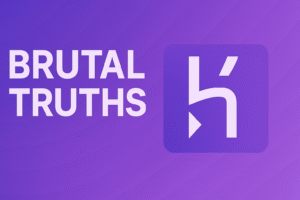The cloud computing landscape has been marked by fierce competition, aka cloud war, among technology giants, with Amazon, Microsoft, and Google vying for dominance. With its vast experience and expansive cloud infrastructure, Amazon has long held a significant lead in the market.
However, Microsoft has been working diligently to close the gap, leveraging its strong presence in the enterprise sector and its Azure cloud platform. Meanwhile, with its powerful search capabilities and vast data infrastructure, Google has been gaining momentum with its Google Cloud Platform.
An Update on the Cloudscape
In the second quarter of 2024, Amazon’s AWS (Amazon Web Services) reported a staggering revenue of $26.3 billion, highlighting its continued dominance. On the other hand, Microsoft’s Azure reported a respectable $13.3 billion, indicating a steady growth in its customer base and market share. Google’s Cloud Platform, although still trailing behind, registered a robust $10.3 billion, reflecting its ambitious expansion plans and increasing adoption.
This competitive landscape is not just about financial numbers but also about the innovative solutions each company offers its customers. Amazon’s AWS, for instance, has been pushing the boundaries of automation and provisioning with its advanced cloud management tools. Microsoft‘s Azure is known for its robust security features and seamless integration with other Microsoft products. With its deep expertise in data analytics and machine learning, Google focuses on AI-driven solutions, aiming to transform how businesses operate.
As the cloud wars continue to heat up, one thing is clear: the future of computing is moving toward a multi-cloud environment, where companies will leverage the best offerings from multiple cloud providers to achieve their IT goals. The battle for supremacy in the cloud is a testament to the relentless innovation and competition driving the tech industry forward.
Cloud Wars
A few major players have dominated The cloud computing landscape for years. As of the second quarter of 2024, Amazon Web Services (AWS), Microsoft Azure, and Google Cloud remain the top contenders in the cloud wars. Each of these giants has its own strengths and weaknesses, and their strategies constantly evolve to stay ahead in the market. In this article, we will delve into the current state of the cloud wars, examining Amazon’s lead, Microsoft’s lag, and Google’s growth.
Amazon’s Lead: Building on a Legacy of Innovation
Amazon Web Services (AWS) has been the undisputed leader in the cloud computing market for over a decade. Its dominance can be attributed to several key factors:
- Early Mover Advantage: AWS was one of the first cloud computing platforms, launched in 2006. This early entry allowed it to establish a strong market presence and garner significant user trust.
- Comprehensive Service Offerings: AWS offers many services, including computing, storage, databases, analytics, machine learning, and the Internet of Things (IoT). This comprehensive suite provides a one-stop-shop for customers, making it easier to adopt and integrate cloud services
- Global Infrastructure: AWS has a vast global infrastructure with over 200 availability zones across 30 geographic regions. This extensive network ensures its customers’ high availability, low latency, and scalability.
- Strong Ecosystem: AWS has a robust ecosystem of over 30,000 independent software vendors (ISVs), system integrators, and partners. This ecosystem ensures a continuous flow of innovative applications and services.
AWS’s leadership is reflected in its financial performance. In the second quarter of 2024, AWS reported $19.4 billion in revenue, a significant increase from the same period last year. The ability to continuously innovate and expand its services to meet the evolving needs of its customers drives revenue growth.
Microsoft’s Lag: Catching Up with the Competition
Microsoft Azure, while a formidable competitor, has struggled to match AWS’s pace in the cloud market. Microsoft’s lag stems from:
- Late Entry: Azure was launched in 2010, several years after AWS. This delay has made it harder for Microsoft to gain traction and build a strong user base.
- Service Limitations: Azure’s service offerings are less comprehensive than AWS’s. While it provides robust computing, storage, and analytics services, it lacks some of the advanced features and tools that AWS offers.
- Infrastructure Challenges: Azure’s infrastructure is not as extensive as AWS’s. It has fewer availability zones and geographic regions, which can limit its scalability and reliability in some regions.
- Marketing and Branding: Microsoft’s marketing and branding efforts have been less effective than those of AWS. This has led to a perceived lack of visibility and awareness among potential customers.
Despite these challenges, Microsoft has made significant strides in recent years. The company has invested heavily in improving its services and infrastructure. In the second quarter of 2024, Microsoft reported $14.4 billion in revenue from Azure, a notable increase from last year. Microsoft’s focus on hybrid cloud solutions and its strong enterprise market presence drive its growth.
Google’s Growth: The Power of Data and AI
GCP has been gaining momentum in the cloud market, driven by its data analytics and artificial intelligence (AI) strengths. Google‘s growth is from:
- Data and Analytics Strengths: Google Cloud offers powerful data analytics and AI tools, such as BigQuery for data warehousing and Google Cloud AI Platform for machine learning. These capabilities bring high value to businesses leveraging their data for insights and innovation.
- AI and Machine Learning: Google’s extensive experience in AI and machine learning has enabled it to develop advanced tools and services that are highly competitive in the market.
- Strong Brand and User Base: Google has a strong brand and a large user base from its search and advertising business. This helps in attracting customers and partners to its cloud offerings.
- Strategic Partnerships: Google has formed strategic partnerships with major companies like Accenture and PwC, which has helped expand its reach and credibility in the market.
Google Cloud’s revenue growth is a testament to its strategies. In the second quarter of 2024, Google reported $8.1 billion in revenue from cloud services, a significant increase from last year. The company’s focus on data analytics, AI, and strategic partnerships is driving its growth and making it a formidable competitor in the cloud market
The Future of the Cloud Wars
The cloud wars will continue to be intense, with each of the major players vying for market share and dominance. Amazon’s lead is likely to persist due to its extensive infrastructure, comprehensive service offerings, and strong ecosystem. Microsoft’s efforts to catch up with AWS will continue, and its focus on hybrid cloud solutions and the enterprise market will likely pay off.
Google’s growth will also continue, driven by its data analytics and AI strengths. The company’s strategic partnerships and innovative services will help it maintain its momentum in the market.
The cloud computing landscape is dynamic, with Amazon, Microsoft, and Google continuously innovating and expanding their services to stay ahead. The future of the cloud wars depends on their ability to adapt to the evolving needs of their customers and stay ahead in the market.
The cloud wars are far from over, and the future will likely see intense competition and innovation. As customers, we can expect to see even more advanced services and capabilities from these giants as they strive to meet the ever-growing demands of the digital age. The winner will continuously innovate and adapt to their customers’ changing needs.
You may also be interested in 5 HIPAA Compliant Cloud Storage Options for Modern Healthcare
Eliminate DevOps hiring needs. Deploy secure, compliant infrastructure in days, not months. Accelerate your launch and growth by avoiding tedious infrastructure tasks. Join thousands of Dev teams getting their time back. Leverage DuploCloud DevOps Automation Platform, backed by infrastructure experts, to automate and manage DevOps tasks. Drive savings and faster time-to-market with a 30-minute live demo
.



